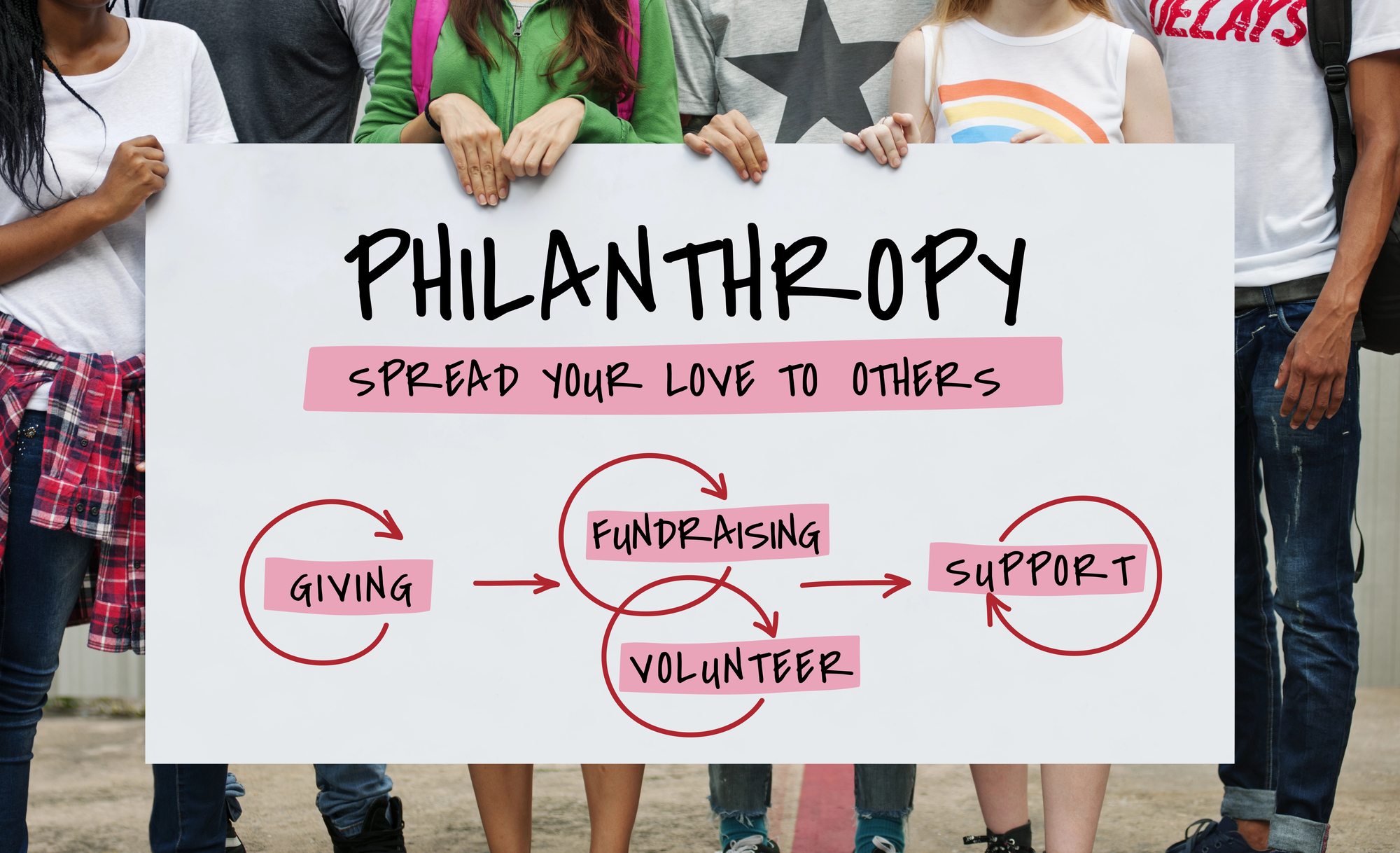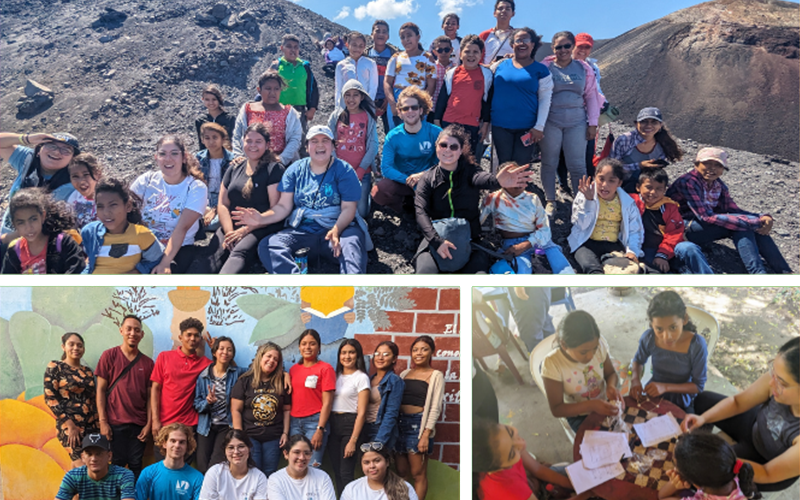More and more companies are engaging in corporate philanthropy every year. Corporate philanthropy can be defined as the activities and initiatives a company engages in on its own to make an impact on society. Aligning corporate teams with charitable causes not only makes a difference in the world but also has many benefits for the teams and their companies as well.
In our latest episode Uniting Teams for Global Good, we talked to Michael Cipoletti about the importance, impact, and benefits of corporate philanthropy initiatives, as well as his inspiring story. Michael is the founder of FNE International, a non-profit that helps provide infrastructure, education, and other resources to Nicaragua, Peru, and the Dominican Republic.
In today’s blog, we’re going to dive deep into the world of corporate philanthropy. We’ll cover the basics of corporate philanthropy, look at Michael’s incredible story, discuss the benefits, and provide insights on how to integrate philanthropy into company culture.
Understanding Corporate Philanthropy
First, let’s start with the basics of what is corporate philanthropy. In simple terms, corporate philanthropy is an organization voluntarily giving back–whether through initiatives, volunteering, fundraising, or other methods–to make a difference and to manage/account for its impacts on society.
Typically, corp philanthropy is tied to an organization’s social purpose. By focusing on a specific issue such as sustainability or world hunger, an organization can tie it to its core values and ultimately make a bigger impact. No matter what an organization’s social purpose is or how they decide to pursue corporate philanthropy, the end goal is the same–to make a positive impact in the world and help those who most need it.
That said, it’s important to acknowledge that corp philanthropy isn’t just people from more fortunate circumstances going to save those in need. This is something that Michael noted in our discussion saying:
“The key to the whole equation was looking at the importance of sustainability not coming down as the global north to save the global south, but looking at how we can partner hand in hand.”
With the basics out of the way, let’s look at Michael’s journey as an example for corporate philanthropy.
Michael’s Inspiring Journey: A Highlight of Corporate Philanthropy
If you’re asking, “what is an example of corporate philanthropy,” look no further than Michael and his journey. He is a stunning example of corp philanthropy, what it looks like, and the impacts it can have. Michael’s journey begins in high school where he was a member of the “Students for 60,000,” a club focused on helping New York City’s then population of around 60,000 unhoused people. He was heavily involved with local homeless shelters, doing food runs and more to help them.
After high school, he convinced a teacher, Peter White, to run an alumni trip to Nicaragua. They built a school on the trip, and it was an eye opening, life changing experience for Michael. Following the trip, he began attending Stonehill College, and immediately he started telling his friends about his experience. Realizing their enthusiasm, he worked with the school to organize a trip to Nicaragua.
As college and life continued on, he was unable to travel for five years. Though he was doing well for himself, he realized he wasn’t fulfilled and had a desire to continue his charitable work. This led to him going back to Nicaragua and deciding to continue organizing more trips. Eventually, this resulted in the creation of his non-profit, FNE international. With FNE, Michael and others have been able to change lives and communities for the better in Nicaragua, Peru, and the Dominican Republic.
One example of this is the innovative Paint Soles for Souls program FNE offers with TeamBonding. Groups work together to paint pairs of Toms shoes, which are then donated in a variety of ways to help communities in need. Sometimes, the shoes are sold at a very low price as a fundraiser to help fund the building of schools, latrines, and other necessities.
This program helps teams get a new perspective on life and the world while building bonds with their coworkers. It also helps raise up those in need, giving them access to more opportunities. This is a point Michael emphasized in our conversation when he said:
“You need to change your perspective, and your goal is not to go down to the level of the poor. Your goal is to raise people up so that they have the same opportunities that you have.”
Michael’s story serves as a compelling real-life example for businesses to embrace corporate philanthropy. Through his efforts, he has been able to help countless people and communities and increase the number of opportunities available to them. And in working with organizations through programs like Soles for Souls, he has helped teams change their perspective and get a better understanding of what life is like for the less fortunate.
Though not everyone can dedicate their life to charitable causes and run a non-profit like Michael, businesses and individuals can still get involved and make a difference in the world. And in doing so, they’ll also get to experience the benefits of corporate philanthropy.
Benefits of Corporate Philanthropy
While Michael’s story is bound to inspire, convincing leadership to engage in corporate philanthropy can sometimes be a challenge. However, there are numerous benefits of corporate social responsibility. These benefits can help convince leaders and emphasize the value in corporate philanthropy.
The most obvious benefits of corporate philanthropy are for those on the receiving end, such as the communities where FNE has built schools or provided shoes. These benefits can be truly life changing. For example, the apparel company Bombas donates a clothing item for every item purchased. So, if a customer purchases ten shirts, they’ll donate ten items to overnight shelters, transitional living facilities, and more. A pair of socks or underwear might not seem like much to us, but that can be life changing for those in need.
Microsoft is another example of how big an impact corporate philanthropy can have. Over the years, Microsoft has removed over two million metric tons of carbon from the atmosphere. They have also provided free digital skills training to 42 million people. And on top of that, they also engage in pro bono legal services focusing on voting rights, immigration, and the incarcerated. While Microsoft is an extreme example due to their size, it’s easy to see the impact they’ve had. They’ve helped clean the environment for all, helped millions of people learn new skills that help them get better jobs, and have helped countless others with their legal troubles.
Shifting focus, let’s look at some of the benefits for businesses. These benefits may not be as obvious, but they can greatly impact an organization. A big benefit of corporate philanthropy can be name recognition and boosted reputation. Another benefit is increased employee retention and engagement. People want to feel like they are part of something bigger than themselves and are making a difference in the world. Engaging in corporate philanthropy can give employees a sense of fulfillment, which can make them feel more engaged and satisfied with their job.
Integrating Corporate Philanthropy Into Company Culture
Lastly, let’s discuss corporate philanthropy strategy and how to integrate it into company culture. For philanthropy to be long lasting and successful, it needs to be a core part of the organization and its values.
Finding a cause that fits your company and team is key. It’s much easier to integrate a cause into your core values when it aligns with your business and employees. If you’re a solar power company for example, focusing on sustainability makes sense because it directly relates to your company’s goals and beliefs. Maybe your team places a lot of value on mental health, so focusing on mental health related causes would be a great fit.
Meaningful team building activities are another great option. Through team building activities that focus on philanthropy, you can emphasize that giving back and being charitable are core values and something your company values. At TeamBonding, we have many events that are perfect for placing a focus on philanthropy. For example, the Prosthetic Hand Project, Clean Water Connection, and Wheelchairs in Motion, all involve teams coming together to make an impact on those in need. These events can help bring your team together while instilling philanthropy as a key component of your organization.
The Transformative Power of Corporate Philanthropy
As is illustrated in Michael Cipoletti’s amazing journey, corporate philanthropy can have life changing effects on the people you are helping, as well as you and your team. His experience emphasizes the importance of corporate social responsibility. Businesses should take action and make a positive impact in their communities through the transformative power of corporate philanthropy. Corporate teams can participate in team building activities for philanthropy that foster a sense of purpose and camaraderie among employees, all while simultaneously making a positive impact on society.
At TeamBonding, we strongly value the importance of corporate philanthropy and have dedicated many of our events to helping those in need. Take the first steps towards making a difference and contact us to learn more about how you can change the world with corporate philanthropy and team building.















